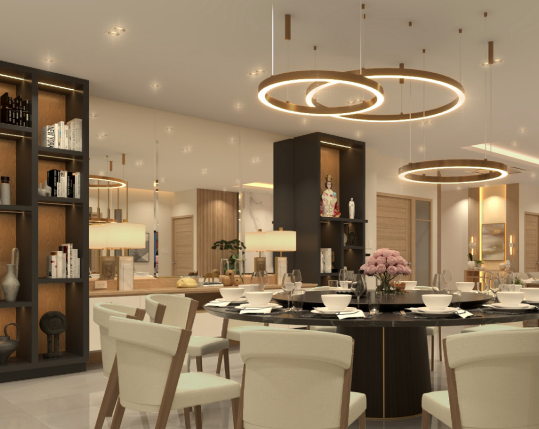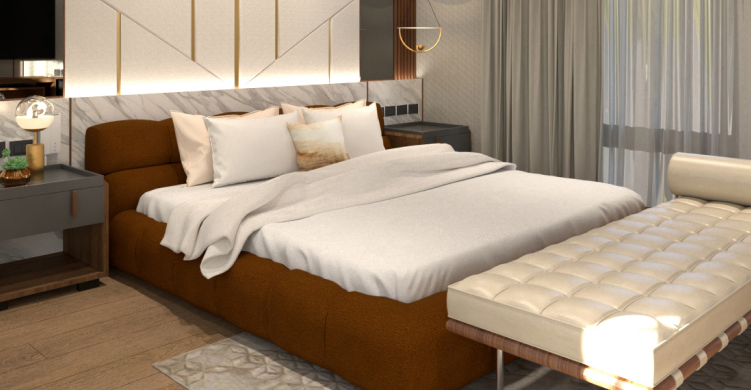Nowadays, remote working has become the new norm, and thus setting up a fully functional and aesthetically pleasing home office is more crucial than ever. Whether you’ve been working from home for years or are adapting to this new setup due to recent circumstances, creating a home office that caters to your work needs while reflecting your personal style can be challenging. However, you can transform any space into a productive and stylish home office with the right approach.
A functional and stylish home office space is possible. Here are ten steps to help you design your perfect home office:
Define the Purpose of Your Home Office
The first step in designing your home office is to define its purpose. Will it serve as a quiet sanctuary for deep, focused work? Or will it be a vibrant hub for video conference calls and virtual meetings? Perhaps you want it to be a creative studio for your art, writing, or content creation endeavors. Understanding the primary function of your office space will influence all subsequent design decisions, from furniture selection to lighting and color schemes.
Moreover, it is essential to consider the type of work you will be doing and the tools you will need. For instance, if you’re a graphic designer, you might require a large desk for your drawing tablet and other equipment. On the other hand, if you’re a consultant, you might need a comfortable seating area for client meetings.
Choose the Right Location
The location of your home office plays a pivotal role in your productivity and work efficiency. You need a location with minimal distractions, sufficient natural light, and ample space to move around. A room with a view would be ideal, but if that’s not available, a quiet corner away from the household bustle can serve the purpose effectively.
Remember that the ideal location for your home office also depends on the nature of your work. If your job involves a lot of phone calls, you might want to choose a location far from noisy areas of your home. On the other hand, if you need to keep an eye on your kids while working, a location near their play area might be more appropriate.
Consider Ergonomics
When setting up your home office, ergonomics should be a top priority. An ergonomically designed workspace can significantly reduce the risk of discomfort and injury. Invest in an ergonomic chair that supports your back and ensures your feet touch the floor. Position your computer monitor at eye level to avoid neck strain, and keep your keyboard and mouse within easy reach to prevent arm and shoulder tension.
Don’t forget about lighting. Poor lighting can lead to eye strain and headaches, reducing your productivity. Make sure your workspace is well-lit with both natural and artificial light. Place your desk near a window to take advantage of daylight, and supplement it with task lighting for more focused work.
Invest in Quality Furniture
Good-quality, durable furniture is a worthwhile investment for your home office. Choose a desk that accommodates your work style and fits well within the available space. A chair that offers excellent support and comfort is essential. Additionally, consider investing in sufficient storage solutions like shelves, filing cabinets, or storage bins to keep your workspace clutter-free.
Remember that your furniture choices should also reflect the image you want to portray. If you meet with clients in your home office, you’ll want to choose professional-looking furniture that conveys your business’s image. On the other hand, if your home office is just for you, you might prefer more casual, cozy furniture that makes you feel at home.
Add Personal Touches
Your home office should be a reflection of your personal style. Infuse it with elements that speak to you and inspire creativity. This could be anything from family photos, pieces of art, decorative items, or even a color scheme that resonates with you. These personal touches can make the space feel more comfortable and inviting, promoting productivity.
You might also consider adding elements that stimulate your senses. For instance, you could play soft music in the background to help you focus or use a diffuser with your favorite essential oils to create a calming atmosphere. These small details can make a big difference in how you feel in your workspace.
Keep it Organized
An organized workspace is key to efficiency and productivity. Invest in organization tools like shelves, baskets, and desk organizers to tidy your workspace. Label your storage areas for easy retrieval of documents or supplies. A clean, organized workspace looks good, saves time, and reduces stress.
Additionally, consider implementing a system to manage your paperwork, such as a filing or digital document management system. Having a system in place will make it easier to track important documents and prevent them from piling up on your desk.
Turn Walls Into Work Spaces
You should utilize your walls too, and transform them into functional workspaces. Install shelves or cabinets for extra storage, hang a whiteboard for brainstorming sessions, or create a corkboard wall for an at-a-glance view of your to-do lists, reminders, and important notes.
Also, consider using your walls to display motivational quotes or artwork. Seeing these positive messages or beautiful images can boost your mood and inspire creativity, especially when you feel stuck or overwhelmed.
Give Yourself a Large Surface Area to Work
Having a spacious work surface is crucial for productivity. Ensure your desk has enough space to accommodate your computer, essential work tools, and paperwork without feeling cramped. Consider an L-shaped or U-shaped desk for added surface area if space allows.
Remember that the size of your work surface should match the nature of your work. You’ll need a larger desk if you often spread out large documents or drawings. But a smaller desk might suffice if your work is mostly digital, leaving more room for other furniture or open space.
Try Unique Accents
Adding unique accents to your home office can make it more visually appealing and stimulating. An accent chair in a bold color, a stylish rug, or a unique light fixture can add personality to your space and make it more enjoyable to work in.
These accents can also serve a functional purpose. For example, a colorful rug can define your workspace in a larger room, while a unique light fixture can provide task lighting where you need it most.
Incorporate Natural Elements
Natural elements like plants can enhance the overall ambiance of your workspace. They not only purify the air but also add a touch of freshness and calm to the environment. Also, try to let in as much natural light as possible. It’s better for your eyes and can boost your mood and productivity.
In addition to plants, consider incorporating other natural elements such as wood or stone. These materials can add warmth and texture to your workspace, creating a more inviting atmosphere. Plus, they are often associated with nature and the outdoors, which can help reduce stress and promote well-being.
Designing a functional and stylish home office is indeed a balancing act, but it’s definitely achievable with a little planning and creativity. For professional guidance on layout and design choices, renowned designer Rock Robins is here to help. Together, let’s create a home office that will inspire and motivate you every day – schedule a consultation with us at Rock Robins today.






